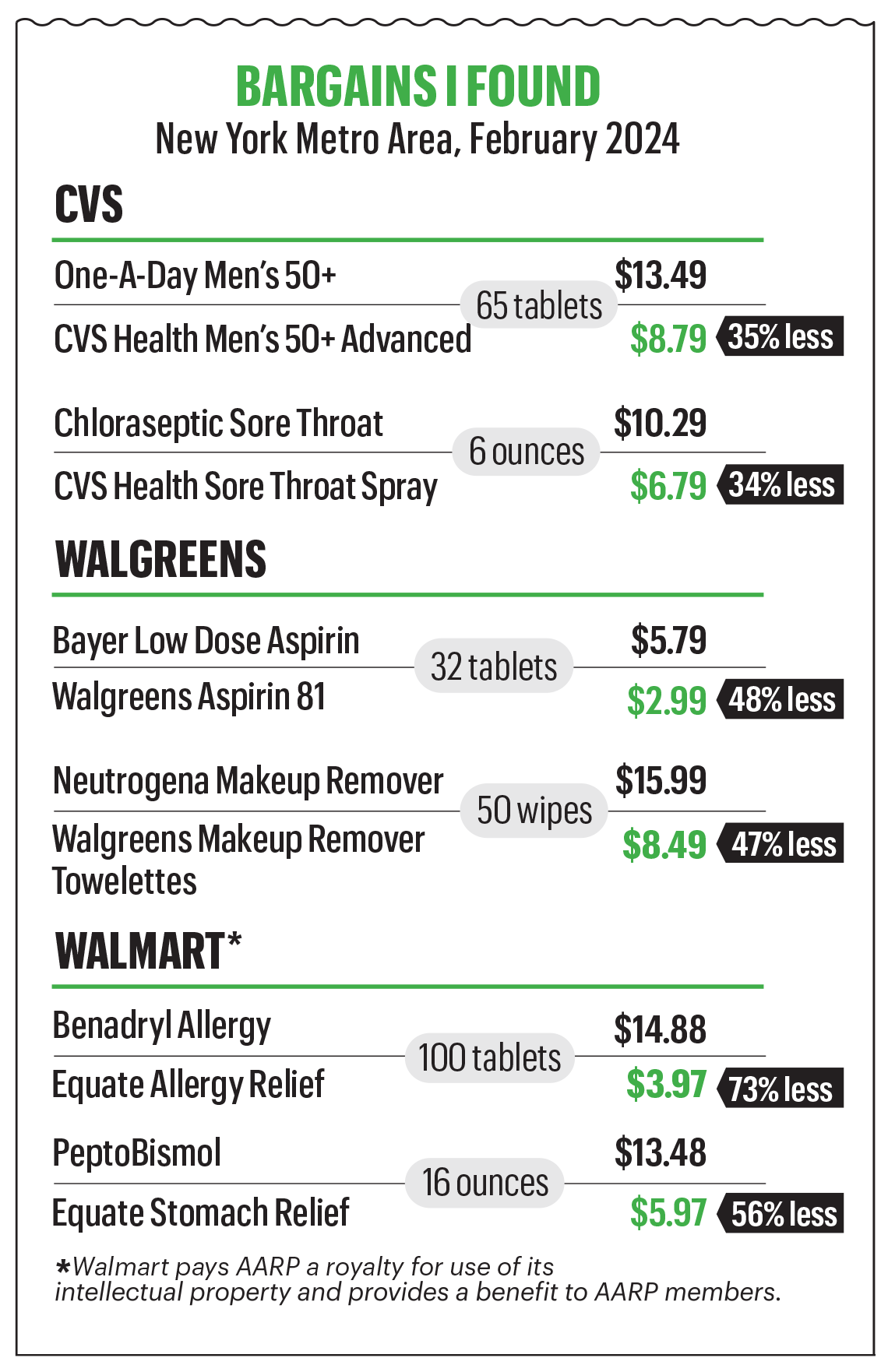Staying Fit


Buying store brands is the easiest way to save on pain relievers, cotton swabs and other drugstore staples. And more of us are making the switch. Sales of private-label products surged to a record $236 billion last year, growing at a higher rate than for big brands.
But habits can be hard to break. I am unreasonably loyal to several famous name brands. I wondered: What would it take for me to give private-label products a try? It didn’t take long to get my answer. After several days of shopping and comparing prices on dozens of items, I concluded that buying store-brand products with the same or similar ingredients as name brands can save hundreds of dollars a year. Let me put it another way: Imagine your local drugstore having a giant sale every day! You wouldn’t want to miss out.


AARP Membership— $12 for your first year when you sign up for Automatic Renewal
Get instant access to members-only products and hundreds of discounts, a free second membership, and a subscription to AARP the Magazine.
Do you worry that lower-cost store-brand generics mean you’re getting lower-quality medicine? You can relax. All over-the-counter drugs have to meet the U.S. Food and Drug Administration’s standards for quality, effectiveness and safety; that’s true for generics as well as venerable name-brand versions.
Here are the findings from a little unscientific experiment I conducted in February in the New York City metro area.
- The price gap between big brands and comparable store brands at the three chains I checked varied dramatically, from 1 percent to 78 percent. Generally speaking, store-brand products were often one-third to one-half cheaper than the national brands. (Often, name-brand products and their store-brand counterparts came in slightly different sizes, so I calculated discounts based on unit pricing.)
- Among the products I checked, Walmart offered the biggest incentive to switch to its store brand, Equate, with savings up to 70 percent or more over comparable big-name products sold at the chain.
- Equate was significantly cheaper than other store brands I checked. Walmart’s prices are so low that I also found examples where name brands there were cheaper than store brands at other chains.
Here’s a sample of some of the biggest savings I found in each store. (Note to my mom: The store-brand equivalent of Salonpas pain relief patches save you 30 percent at your favorite drugstore!) Of course, coupons and sales can change the math, but bring your reading glasses and check the fine print. If the deal requires you to buy more than one item, it may not be worth it if you’re not going to use up the product before its expiration date.





































































More From AARP
How to Save on Eyeglasses
See better for less with savings on eyeglassesHow to Protect What You Collect
Tips for caring for your collectibles, including proper organization, accurately assessing the value and more
America’s Favorite Online Retailers
Customer satisfaction with online retailers increases since the pandemicAmerica's Favorite Grocery Stores Ranked
Check out the list to see if your supermarket made the cut